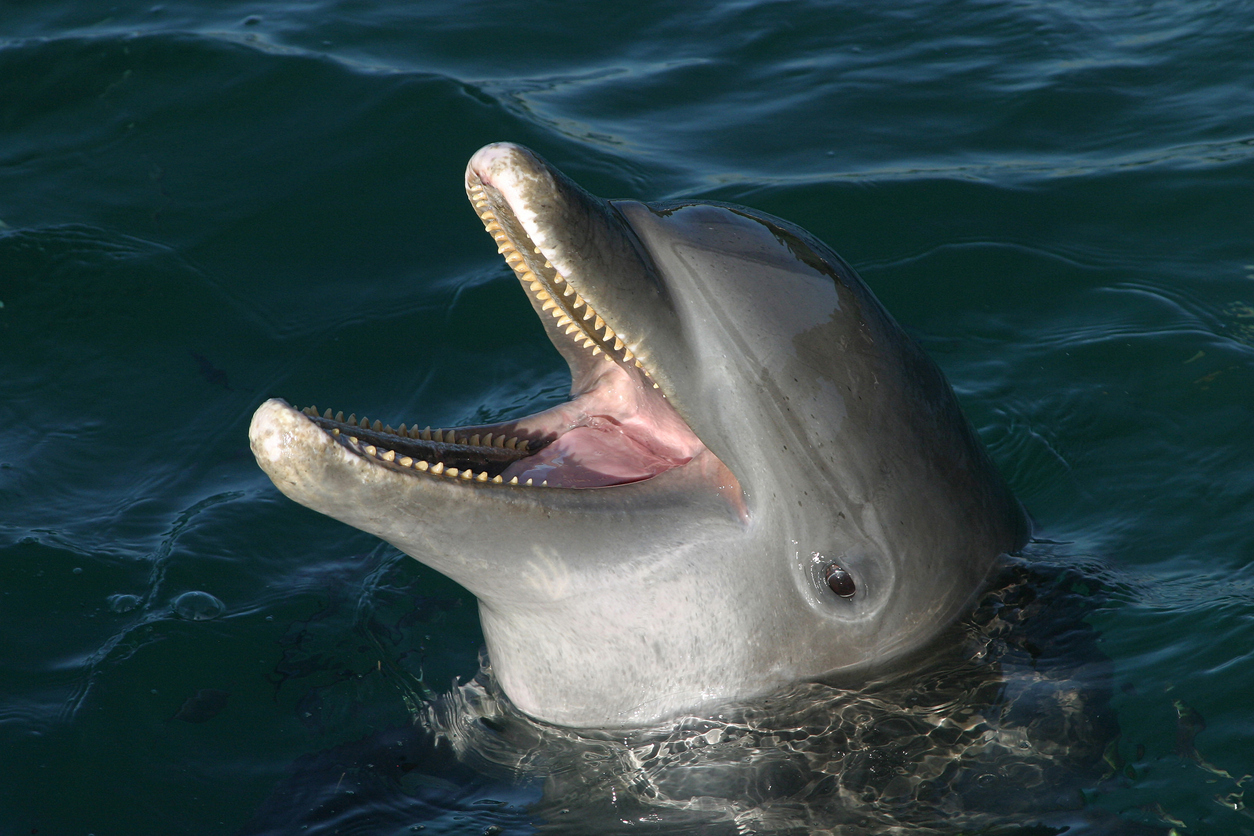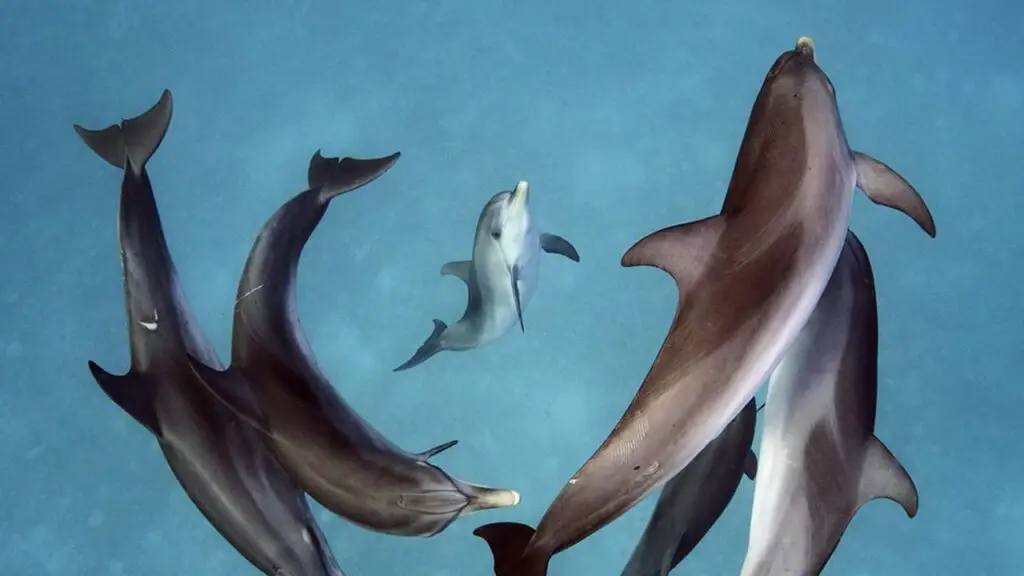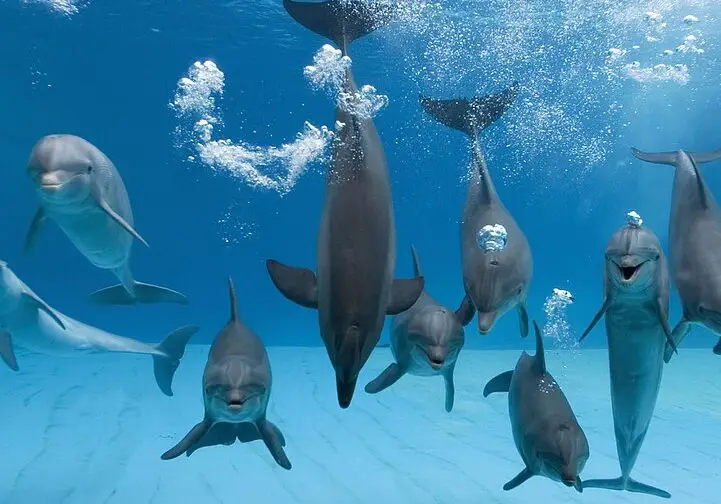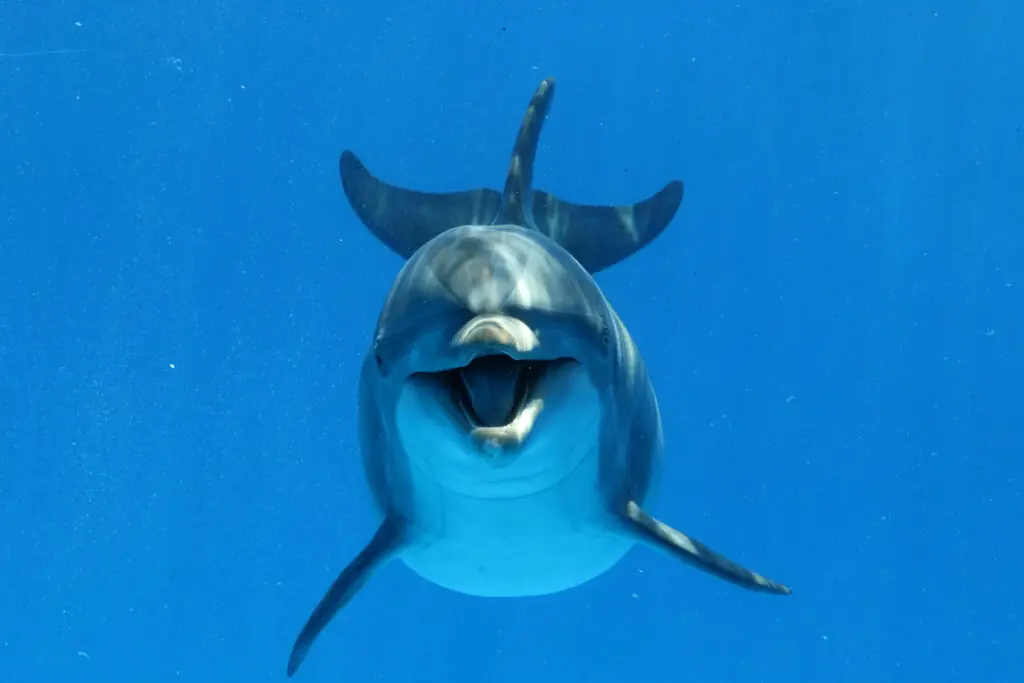Sinister Smiles

Dolphins’ “smiles” may look endearing, but they hide a darkness that’s as chilling as it is unexpected. Researchers have documented dolphins ruthlessly attacking porpoises—not for food, but seemingly for sport. A study in Marine Mammal Science revealed these assaults target vital organs with precise strikes, leaving no chance for escape. Such calculated violence offers no survival benefit, baffling scientists and drawing eerie comparisons to human sociopaths. In one case off the coast of Scotland, researchers observed a pod of dolphins systematically herding a group of porpoises before delivering lethal blows. These behaviors suggest a disturbing side of dolphin intelligence—one capable of deliberate cruelty and domination.
Adding to their sinister nature is their advanced social intelligence. Dolphins form alliances, execute revenge, and use exclusion tactics to maintain power within their pods. A leading expert in dolphin behavior, likens these actions to the manipulative strategies employed by human psychopaths. Dolphins even manipulate their environment to their advantage, using cooperative hunting strategies to corner prey. That ever-present grin? It’s starting to feel less like a smile and more like a mask for something far more sinister.
Coalition Control

In dolphin society, alliances are the foundation of power—and they aren’t always innocent. Male dolphins often form coalitions to dominate their peers and ensure control over mating opportunities. A 15-year study at the University of Massachusetts Dartmouth documented how coalitions strategically isolate rival males and monopolize access to females. These partnerships operate like political power plays, with weaker males supporting dominant ones in exchange for future benefits.
What’s even more striking is the betrayal within these alliances. Dolphins have been observed turning on their allies when the opportunity arises to secure a stronger position. Dr. Richard Connor, who led the study, describes these alliances as opportunistic and manipulative, showcasing the dolphins’ ability to strategize and adapt to their environment. Their coalitions reveal a dark side of cooperation, one focused on control rather than unity.
Masters of Disguise

Dolphins’ playful reputation hides their ability to deceive not only with sounds but also with actions. Researchers at the University of Hawaii found that dolphins can mimic the movements of other marine animals, from the slow glide of a turtle to the darting speed of a barracuda. This behavior, often seen during hunting, confuses their prey, making it easier to ambush them.
But their mimicry doesn’t stop there. Dolphins have been observed faking injury to lure predators away from their pods or distract rivals during confrontations. Dr. Louis Herman, a pioneer in dolphin research, noted that this ability to manipulate through physical behavior is rare in the animal kingdom and highlights their problem-solving capabilities. These calculated disguises demonstrate that dolphins are not just clever communicators—they’re masterful strategists.
Whistle of Deception

Dolphins’ communication skills are world-renowned, but their vocal abilities hide a darker side. Research from the University of St. Andrews revealed that dolphins use unique whistles as “names” for individuals in their pods. On the surface, this seems like an adorable quirk, but these vocalizations can be weaponized. Dolphins have been observed using fake alarm calls to mislead their rivals during feeding frenzies, allowing them to secure the best food while their competitors scatter. This calculated deception demonstrates an intelligence capable of exploiting trust for personal gain.
Dr. Vincent Janik, a leading researcher on dolphin communication, explains that dolphins’ ability to recognize and replicate these whistles allows them to manipulate their social dynamics. In some cases, they’ve even used these vocalizations to undermine allies, furthering their own status within the pod. This behavior isn’t random—it’s strategic. Dolphins don’t just use their whistles to bond; they use them as tools of deception and control, making their social interactions eerily reminiscent of human manipulation.
Calculated Revenge

Dolphins aren’t just intelligent—they’re vindictive, with a capacity for revenge that mirrors human sociopaths. At the Dolphin Research Center in Florida, researchers documented a dolphin refusing to cooperate with a trainer after being scolded. For weeks, it sabotaged exercises, deliberately ignoring that trainer while complying with others. This wasn’t a random tantrum—it was calculated retaliation, demonstrating a memory and ability to hold grudges rarely seen in animals. In one case, a dolphin intentionally disrupted another’s performance during a group task, seemingly to repay an earlier slight.
Revenge within pods is even more chilling. Dr. Heidi Harley, a leading researcher, observed dominant dolphins targeting rivals who challenged their authority, isolating them through coordinated efforts. These aren’t acts of instinctive aggression—they’re strategic moves designed to intimidate and control. Dolphins’ ability to remember and plan their retribution reveals an unsettling parallel to human psychological patterns of manipulation and dominance.
Opportunistic Killers

Dolphins may not have the reputation of apex predators, but their behavior often tells a darker story. In one shocking study published in Biology Letters, male dolphins were observed killing calves that weren’t their own. These brutal attacks, known as infanticide, force the mothers back into mating cycles, giving the attackers an evolutionary advantage. This behavior isn’t driven by hunger—it’s calculated and cold, showcasing dolphins’ willingness to use violence to achieve their goals. Such acts of cruelty reveal a level of strategic thinking that echoes the psychological manipulation seen in human predators.
What makes this behavior even more chilling is the precision of the attacks. Dr. Simon Allen from the University of Bristol noted that male dolphins coordinate these killings in groups, often isolating a calf from its mother before delivering fatal blows. This isn’t random aggression—it’s a deliberate tactic for control. Dolphins’ intelligence may make them fascinating, but their actions often paint a far more sinister picture.
Clever Tool Users

Dolphins are one of the few species in the animal kingdom to use tools, showcasing a unique blend of intelligence and adaptability. In Shark Bay, Australia, bottlenose dolphins have been observed using marine sponges to protect their snouts while foraging along sharp coral reefs. This behavior, documented by researchers at the University of Zurich, highlights cultural learning, as mother dolphins pass this skill to their offspring.
Beyond foraging, dolphins have been seen wielding objects like sea urchins or rocks to intimidate rivals. These actions suggest a capacity for problem-solving that extends beyond survival needs. Dr. Janet Mann of Georgetown University notes that tool use in dolphins is a learned behavior, reflecting their ability to adapt to their environments. The combination of cultural transmission and individual innovation cements dolphins as some of the most ingenious creatures in the ocean.
Social Sabotage

Dolphins’ social intelligence isn’t always used for harmony—it’s often a weapon. Researchers at Murdoch University in Australia documented dolphins isolating rivals by disrupting their social bonds. In one case, dominant dolphins used aggressive vocalizations to exclude a weaker male from a mating group. This deliberate ostracization weakens competitors, ensuring fewer threats to their own dominance.
The strategy doesn’t stop at exclusion. Dolphins have also been observed spreading confusion within pods by mimicking rivals’ whistles, throwing alliances into disarray. Dr. Simon Allen of Murdoch University explains that this kind of manipulation is calculated and goes beyond instinct. By dismantling social structures, dolphins secure their own positions of power, making them masters of sabotage in their underwater hierarchies.
Tactical Hunters

Dolphins’ hunting strategies are as sophisticated as they are brutal. Bottlenose dolphins use echolocation to herd schools of fish into tightly packed bait balls, trapping prey with no escape. Researchers at the Wild Dolphin Project observed dolphins creating “bubble nets,” where streams of air bubbles encircle fish to disorient them. This level of cooperation is rare in the animal kingdom.
Orcas, the largest dolphin species, take hunting to another level. A study by Dalhousie University described how orcas work together to create waves that knock seals off icebergs, leaving them vulnerable. These apex predators have also been observed attacking blue whales, using strategic exhaustion tactics before delivering the final blow. Dr. Lance Barrett-Lennard of the University of British Columbia noted that these methods aren’t instinctual—they’re learned and refined across generations. Dolphins’ ability to adapt and innovate keeps them at the top of the marine food chain.
Empathy as a Weapon

Dolphins’ empathy is often celebrated, but it can also be exploited for manipulation. At Dolphin Reef Eilat, researchers documented dolphins pretending to be injured or struggling, drawing attention away from feeding opportunities or other rivals. In one instance, a dolphin faked distress near the surface, distracting competitors while it claimed the best food.
Dr. Michael Scheel of Dolphin Reef explains that this behavior is deliberate rather than instinctual. By exploiting emotional cues, dolphins manipulate both humans and peers for personal gain. This behavior mirrors tactics seen in human predators, where feigned vulnerability is used to achieve dominance or control. While empathy is generally seen as altruistic, dolphins’ ability to weaponize it blurs the line between intelligence and cunning, adding a sinister edge to their celebrated social skills.


